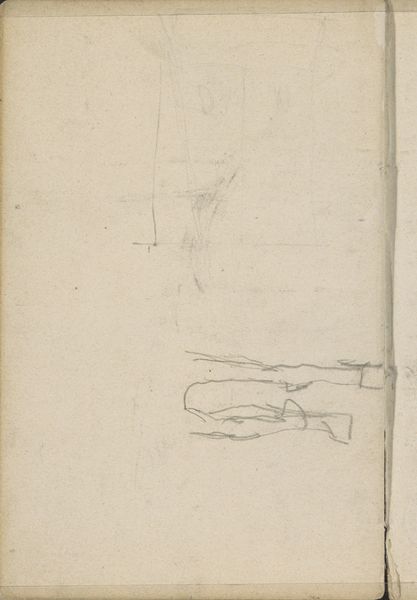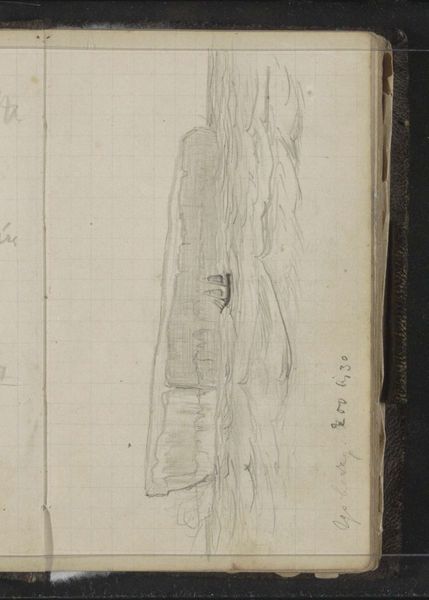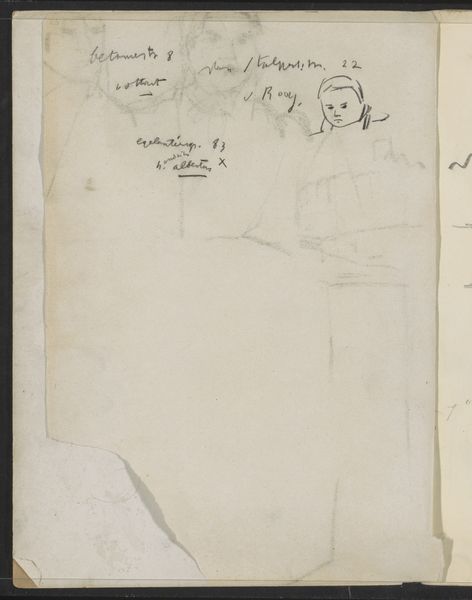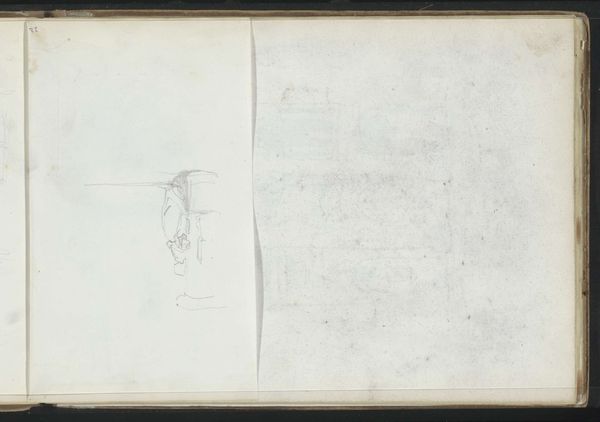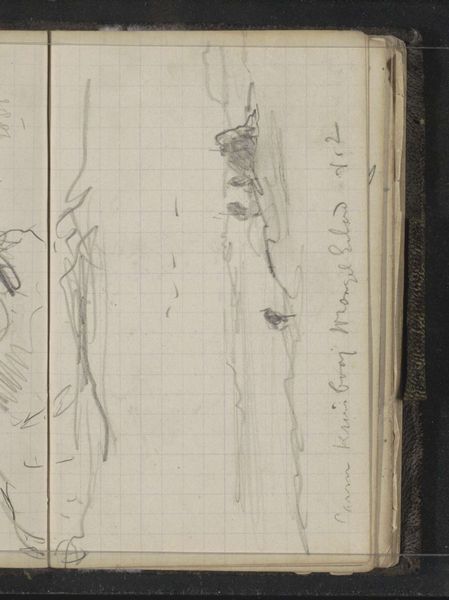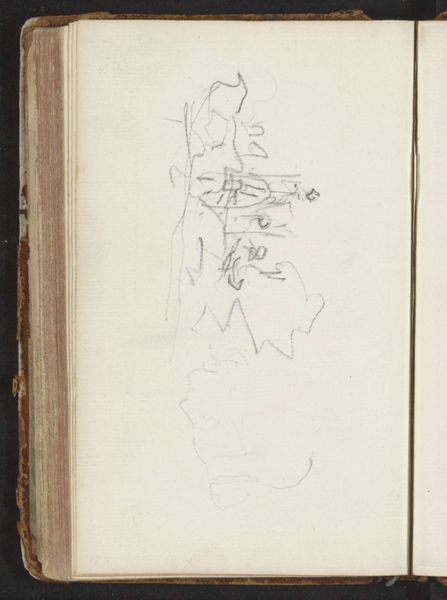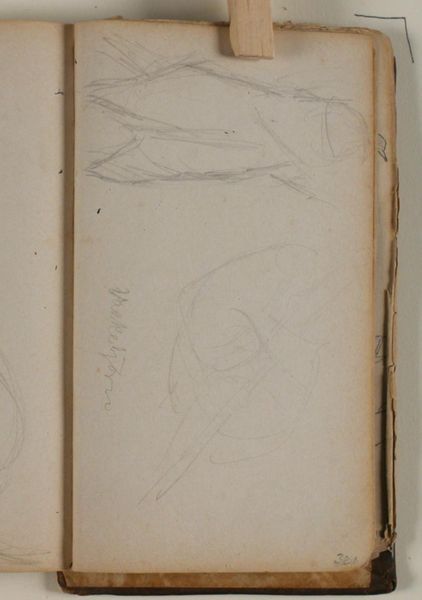
Copyright: Rijks Museum: Open Domain
Curator: So evocative, isn’t it? This is “Robbenjagers op zee,” or “Seal Hunters at Sea,” a pencil drawing on paper by Louis Apol, created somewhere between 1880 and 1887. Editor: Spare, definitely spare. It feels like a half-remembered dream. There’s a melancholy to these skeletal boats adrift on what looks like graph paper. Very raw. Curator: I find that raw quality deeply appealing too. The romanticism, as some call it, lies in that sense of something vast and unknowable contained in this tiny frame. It's as if he captured the very moment a memory begins to fade. Editor: Interesting use of materials, though. Here you have something as ephemeral as a fleeting sketch attempting to document the material labor of seal hunting. A job with profound real-world consequences, rendered in the lightest of pencil strokes, and on *paper*. Trees turned to gridlines. Curator: A stark contrast, yes. It makes you consider the tools themselves—the paper and pencil. The sea, the boats, the seals... all translated through his hand, his mind, onto the page. Each mark carrying its own weight, however slight. Editor: And the weight of the context: Industrialization was well underway; Apol living comfortably while documenting men extracting resources. I can’t help but wonder how those materials—pencil, paper, but also those boats and hunted seals—participate in larger systems of production and exchange. It asks implicit questions about artistic responsibility. Curator: Absolutely, the layers are complex. And those romantic notions—aren't they always intertwined with a sense of unease, of impending change? Even in something so simple as a quick sketch. He caught it, you see. The whisper of something shifting. Editor: I agree. The beauty, such as it is, coexists uneasily with the implicit violence inherent in the act depicted. What stories are etched not just on the paper but also onto the bodies, human and animal, caught up in that exchange? The rough handling… of it all. Curator: It reminds us that art doesn’t exist in a vacuum, it captures echoes of our world that whisper even across time and through simple mediums. Editor: Agreed. Food for thought, rendered economically with humble materials. It reminds me how art allows for deeper scrutiny of industry.
Comments
No comments
Be the first to comment and join the conversation on the ultimate creative platform.
